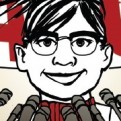Hank Q1-2018
See the whole issueFrom the Desk of Henrietta: A Tale of Two Ankles
I have a friend who loves to play softball. In 1999, she tore her left Achilles tendon while sliding into first base. Her surgery involved getting cut open and then stitched up, which was painful and created a risk of infection. It put her in a heavy cast for six months, left a five-inch scar and was an all-around miserable experience.
Four years later, while playing racquetball, she (you guessed it) tore her right Achilles tendon. In just those few years, surgical technology had improved so much that she could get her leg patched up with laser surgery. She still had to wear a cast — but for only three months this time, and there was no scar. There was hardly any pain. “It was like night and day,” she says.
When someone says, “I don’t want to learn the new way. The old way works just fine,” I tell them about this friend.
Imagine that her doctor and care team had not bothered to learn about the laser surgery. Their patients would have suffered with a longer and tougher recovery than necessary. Caregivers want the best for their patients. That wouldn’t have been the best.
In everything we do, we put the patient and member at the center. Developing the skills of our workforce is no different. We learn new treatment methods to help our patients get better faster. We learn new software programs to help them get their medications more quickly and efficiently. We figure out the new technological gizmos so we can have virtual visits with our members, saving them the time, effort and sometimes discomfort of getting to our brick-and-mortar offices. We invent new ways of doing old jobs, or create entirely new jobs, to meet new needs.
Giving up the old way of doing things is scary, but also liberating. Learning new things can be difficult, but also fun. We’re navigating our way into the future together, supporting one another all along the way.

